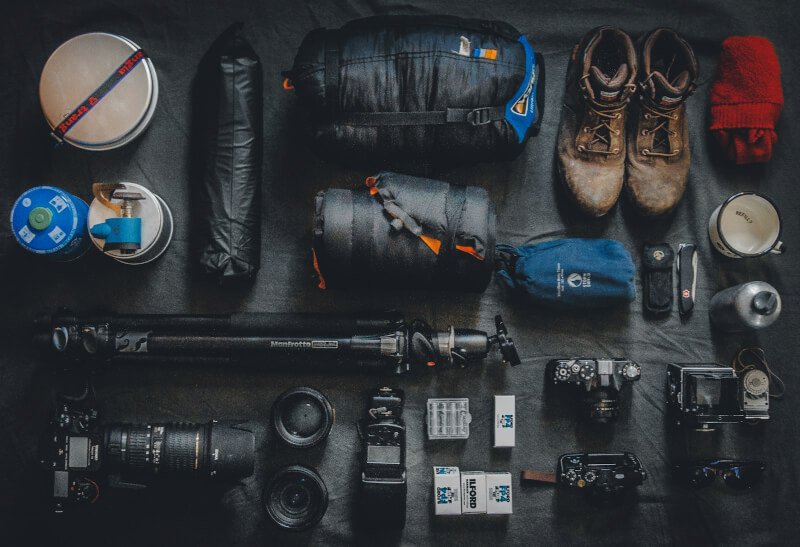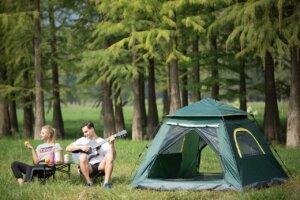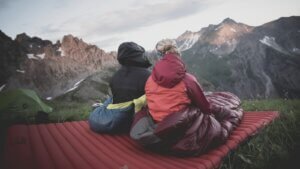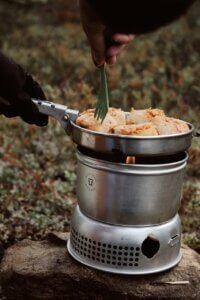Camping is a delightful way to immerse yourself in nature and create unforgettable memories. Whether you’re a novice or an experienced camper, having the right gear is essential for a successful trip. In this article, we will explore the must-have camping gear for beginners. From tents to sleeping bags, cooking equipment to lighting, we’ve got you covered with all the essentials to ensure a comfortable and enjoyable camping experience. So grab your backpack and get ready to embark on an exciting outdoor adventure! Camping is a wonderful way to connect with nature and embrace the great outdoors. Whether you’re a seasoned camper or new to the experience, having the right gear can make all the difference in ensuring a comfortable and enjoyable trip. From tents to sleeping bags, sleeping pads to camp stoves, there are several essential items that every beginner camper should consider. In this article, we will explore the different types of camping gear and discuss their features and benefits, helping you make informed decisions for your upcoming camping adventure.
Tent
Size and capacity
When choosing a tent, it’s important to consider the size and capacity that will best suit your needs. Tents come in various sizes, ranging from cozy one-person shelters to spacious family-sized options. Think about the number of people who will be sleeping in the tent and whether you’ll need extra space for gear. It’s always a good idea to choose a tent with a slightly higher capacity than the number of occupants to allow for comfort and storage.
Durability and weatherproofing
Durability and weatherproofing are crucial factors to consider when selecting a tent. Look for tents made from high-quality materials that are designed to withstand different weather conditions. The tent should have a sturdy frame, strong zippers, and reinforced seams to prevent tearing. Additionally, waterproof or water-resistant materials, along with a rainfly, will provide protection from rain and condensation.
Ease of setup
For beginner campers, a tent that is easy to set up can make the camping experience much more enjoyable. Look for tents with simple assembly instructions, color-coded poles, and intuitive designs. Practice setting up your tent at home before your camping trip to familiarize yourself with the process and ensure you can set it up quickly and efficiently.
Ventilation
Proper ventilation is essential to prevent condensation buildup and keep the interior of the tent comfortable. Look for tents with mesh panels or windows that can be opened to allow for airflow. This will help regulate temperature and reduce the chances of waking up to a damp and stuffy tent in the morning.
Sleeping Bag
Temperature rating
When it comes to sleeping bags, the temperature rating is a crucial consideration. Sleeping bags are designed to provide insulation and keep you warm in various temperature ranges. Choose a bag with a temperature rating that suits the conditions you’ll be camping in. It’s always a good idea to opt for a bag with a slightly lower temperature rating than you expect to encounter to ensure you stay warm even if the weather unexpectedly turns colder.
Insulation type and fill power
Insulation is what keeps you warm in a sleeping bag, so understanding the different insulation types is important. Synthetic insulation is affordable, quick-drying, and insulates even when wet, making it a great option for camping in damp conditions. Down insulation, on the other hand, offers excellent warmth-to-weight ratio but can be more expensive and loses its insulating properties when wet. Fill power refers to the quality of down insulation, with higher fill power indicating better warmth retention.
Size and weight
Consider the size and weight of the sleeping bag, as this can affect both your comfort and your ability to carry it during hikes. Look for bags that offer a good balance between warmth and packability. A mummy-style bag, which tapers at the feet, can help reduce weight without sacrificing insulation. Additionally, compact compression sacks can further reduce the size of the bag when packed.
Comfort and features
Sleeping bags come with various comfort features, such as adjustable hoods, draft tubes, and pockets. These features can enhance your sleeping experience by allowing you to customize the fit and store small items within reach. Consider these comfort features when choosing a sleeping bag to ensure a cozy night’s sleep.
Sleeping Pad
Type and thickness
A sleeping pad is essential for providing cushioning and insulation between your body and the ground. There are different types of sleeping pads, including self-inflating pads, air pads, and foam pads. Each type has its pros and cons, so consider factors like comfort, insulation, and weight when making your selection. Additionally, the thickness of the pad can contribute to comfort, with thicker pads providing more cushioning.
Insulation
Some sleeping pads offer additional insulation to keep you warm in cold temperatures. Look for pads with built-in insulation or reflective materials that help trap your body heat. This can be particularly beneficial if you plan on camping in colder climates or during colder months.
Portability
For beginner campers, portability is a key factor to consider. Look for sleeping pads that are lightweight and easily packable. Inflatable pads can usually be compacted down to a small size, making them convenient for hiking and backpacking trips. Foam pads are generally more durable but can be bulkier compared to inflatable pads.
Comfort
Comfort is paramount when it comes to sleeping pads. Consider factors such as surface texture, cushioning, and stability. Some pads feature contoured designs or various zones to provide support to different parts of your body. Look for pads with features that cater to your specific sleeping preferences to ensure a restful night’s sleep.
Camp Stove
Fuel type
Camp stoves come in different fuel types, including propane, butane, and multi-fuel options. Propane is a popular choice due to its ease of use, availability, and consistent heat output. Butane stoves offer similar benefits but tend to be more compact and lightweight. Multi-fuel stoves provide the flexibility to burn various types of fuel, ideal for camping in remote areas where specific fuel may not be available.
Cooking power
Consider the cooking power of the camp stove, which is typically measured in BTUs (British Thermal Units). Higher BTUs indicate a higher heat output, allowing for faster cooking times. However, keep in mind that higher cooking power often comes at the cost of increased fuel consumption.
Portability and weight
For beginner campers, portability and weight are important factors when choosing a camp stove. Look for lightweight and compact stoves that can easily fit into your backpack. Foldable or collapsible designs can further enhance portability.
Ease of use
A camp stove should be easy to set up, ignite, and operate. Look for stoves with clear instructions and intuitive designs. Features like built-in igniters or flame control valves can make the cooking process more convenient and user-friendly.
Fuel efficiency
Efficiency is another important consideration, as it can impact the amount of fuel needed for cooking. Look for camp stoves with efficient burner designs that maximize heat transfer and minimize fuel waste. This can help reduce the amount of fuel you need to carry, making your camping trips more sustainable and cost-effective.






